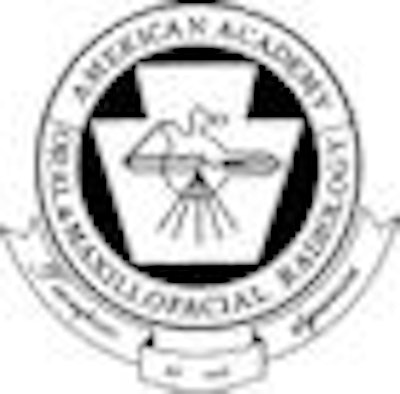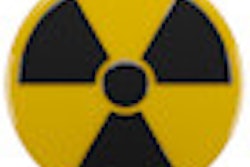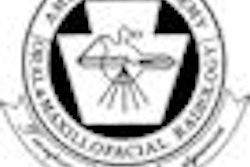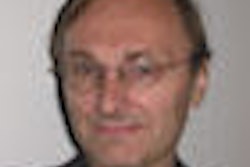
2010 marks a turning point for the American Academy of Oral and Maxillofacial Radiology (AAOMR). Not only is the specialty itself undergoing its first ADA review, the organization is actively working to create a higher profile and take a leadership role on such important topics as cone-beam CT (CBCT) dose guidelines, 3D imaging for implant planning, orthodontic imaging using CT, and electronic data sharing.
 |
|
Allan Farman, president, American Academy of Oral and Maxillofacial Radiology |
"Our strategic plan is much more outward-looking than it had been previously," said Allan Farman, B.D.S., M.B.A., Ph.D., D.Sc., a professor of radiology and imaging science at the University of Louisville in Kentucky and the newest AAOMR president (he took over the two-year appointment last October). "We want the AAOMR to have more of a mission to be part of the healthcare delivery profession in general. And we are putting more emphasis on serving the public."
A key starting point was the academy's Web site, which Dr. Farman said was often difficult to use and navigate. Unveiled this week, the revamped site sports a new look and more user-friendly format that should make the AAOMR more accessible to members and the public -- whether trying to renew membership, pay membership dues online, update roster information, or access the organization's publications, position papers, and other resources, according to Dr. Farman.
"This being a modern world, we are ever more dependent on electronic means of communication," he said. "Each member now has the ability to work directly with the Web site and add material, both on the front end and the back end."
The AAOMR is also working to create stronger collaborations with other professional organizations. Last month, for example, the academy formed a joint task force with the American Association of Endodontists (AAE) to explore the use of CBCT in endodontics, especially the issue of dosage, and develop a position paper on this topic.
"In the past when we talked about cone-beam CT, we were talking primarily about large field-of-view (FOV) systems with medium to high resolution," Dr. Farman said. "But now we are looking at relatively low-dose, high-resolution, small FOV systems, and endodontists have been buying these systems. We want to educate them."
Orthodontic imaging
Similarly, the AAOMR is working with the American Association of Orthodontists to set up a joint task force to develop guidelines for orthodontic imaging, again with specific reference to cone-beam CT, Dr. Farman said.
“We are putting more emphasis on serving
the public.”
— Allan Farman, president, American
Academy of Oral and Maxillofacial
Radiology
"Orthodontic patients tend to be young and more susceptible to radiation damage over their lifetimes, and orthodontists tend to take several images," Dr. Farman said. "We need some selection criteria so patients aren't overdosed."
There is a dichotomy in the orthodontic community when it comes to the value of 3D imaging for orthodontic planning and the number of images needed to optimize outcomes, he added. "We need better evidence and some guidelines. We want to have these communities thinking about the type of procedures, the type of images, full versus limited volume, etc., before they expose the patients."
The AAOMR will also address the issue of 2D versus 3D imaging for implant planning and will be reworking its existing position paper on this topic, Dr. Farman said.
"There is a lot of controversy in this area," he said. "There are a lot of gurus who have placed implants for 40 years using 2D images and thought 'Why do I need to look at it in three dimensions?' But people taking 3D images soon realize that 2D images don't show provide sufficient information for optimal implant placement. For more than a decade, the academy has recommended use of images showing the third dimension for planning implant placement. This policy is easier to achieve at comparatively low radiation dose since the advent of cone-beam CT."
Data sharing
In another step forward, the AAOMR last month was approved as a member organization of the international Integrating the Healthcare Enterprise (IHE), a global initiative that creates the framework for passing vital electronic health information seamlessly across multiple healthcare enterprises. The AAOMR is now in the process of requesting a new IHE domain, IHE-Dentistry, and intends to also become an active participant in IHE-Radiology.
In line with this, the academy has begun collaborating with the American Association of Oral and Maxillofacial Pathologists (AAOMP) to address the issue of interstate reads of histopathology slides and radiographs, Dr. Farman said.
"We have a problem in that some states consider that when a patient comes to you from another state, as long as they travel to you -- whether by plane, train, or automobile -- it is fine," he said. "But if the radiographic or histopathologic images and other health information data come to you electronically [from out of state], miraculously you are not doing the reads where you are sitting but rather in the state the patient came from. This is crass stupidity. HIPAA was created for portability of information and access to care, but in this case it is limiting access to care in the 20 or so states that believe electronic transmission of data beams the reader back to their state. We need solutions to the electronic transfer of data that can be done in an acceptable way."
The simple solution is that electronic movement of data (the surrogate patient) and the actual patient's physical transport should be considered equal, and the practitioner receiving either should be liable to the board of dentistry in the state where the service is being provided, he added.
In the meantime, the most immediate priority for the AAOMR is the ADA Council on Dental Education and Licensure specialty periodic review, which takes place in April, Dr. Farman said. This is the first time oral and maxillofacial radiology has gone through this review process since being recognized as a specialty by the ADA in 1999. He is thrilled that so many AAOMR members have stepped up to participate in preparing for the review, but he urges more "young, active, energetic folk" to come forward and volunteer.
"We are trying to recruit more manpower and build up a sense of the members," he said.
Copyright © 2010 DrBicuspid.com



















